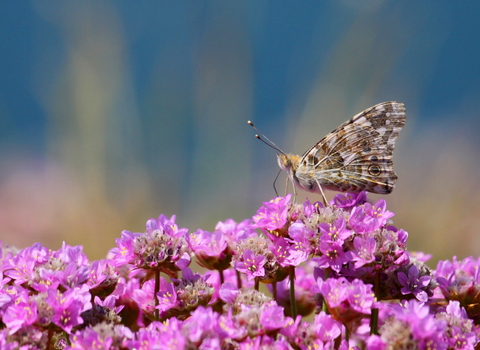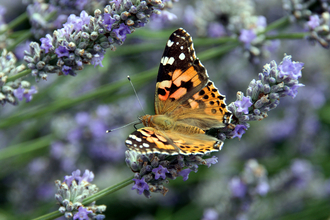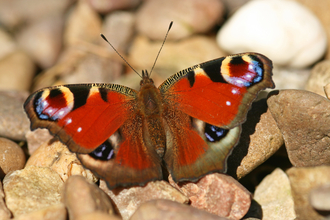Swifts, cuckoos, wildebeest and basking sharks – we admire these creatures for their epic seasonal migrations. But there is another, far bigger group of species who undertake even more audacious journeys: insects.
During the Second World War, military observers reported a golden ball drifting over the Channel. What they feared was a cloud of poison gas was actually a huge mass of migrating clouded yellow butterflies. In 1846, the Canterbury Journal reported a “cloud” of small whites so dense that it obscured the sun as it passed over a Channel steamer.
These mass migrations are not ancient history. In 2009, 11 million painted lady butterflies arrived in Britain from southern Europe. These strong-flying migrants were spotted everywhere from the Highlands to central London, and produced millions more offspring. Two fields in Cornwall contained 500,000 painted lady caterpillars.
Painted Lady ©Gillian Day
The painted lady is our best-known migratory insect but there are many others, including moths, dragonflies, ladybirds, hoverflies and even aphids. Climate change will bring more to our shores. It seems far-fetched that insects can cross continents, but we now know they do. Satellite tags are still too large, but other technologies are shedding new light on the marvels of insect migration.
Each autumn, given favourable winds, moth traps fill with exciting continental arrivals such as the enormous convolvulus and death’s-head hawk-moths, and the delicate vestal moth. Enthusiasts call these migratory moths, but Richard Fox of Butterfly Conservation distinguishes between insects that are simply dispersing as widely as possible after a successful breeding season, and “obligate”, or true, migrants.
Most migratory moths are on a fairly fruitless dispersal. “The killer piece of evidence is that the best time of year to see migrant moths is the autumn,” says Fox. “To me as a biologist they can’t be ‘proper’ migrants because the habitat here in winter is not going to support their breeding cycle and they are unlikely to survive.” In other words, Britain is a dead-end.
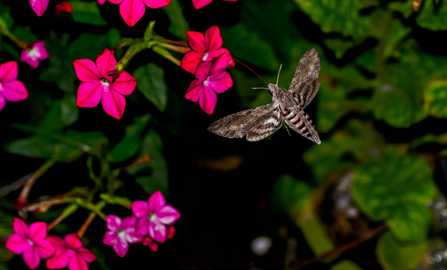
Convolvulus hawk-moth ©Jamie Mogridge-Percy
In contrast, obligate migrants build their life-cycle around migration. For British butterflies, the big challenge is to survive winters when caterpillars’ food plants don’t grow. Most do this by hibernating. But migrants such as the clouded yellow survive by moving south, to warmer climes. It was long assumed that the painted lady retreats to Morocco but scientists have recently discovered that it also crosses the Sahara. Then, when it gets too hot for the sub- Saharan African generation, they move north again. The painted lady migration route can span up to 7,500 miles but this may be via three or more quickly-reproducing generations. Such insights have been gathered using new forensic techniques, analysing chemicals found in painted lady wings to discover where individuals grew up as caterpillars.
Until the 2009 painted lady invasion, it was unclear if Britain was a dead-end for the species. People observed painted ladies arriving but never saw them depart and their offspring couldn’t survive winter.
Scientists solved the mystery using Rothamstead Research’s two upward-facing radars in Hampshire and Hertfordshire. These special entomological radars identified painted ladies flying southwards at the end of the summer: the butterfly previously evaded detection because it rises to an average of 500 metres to take advantage of prevailing winds, flying south at 30mph.
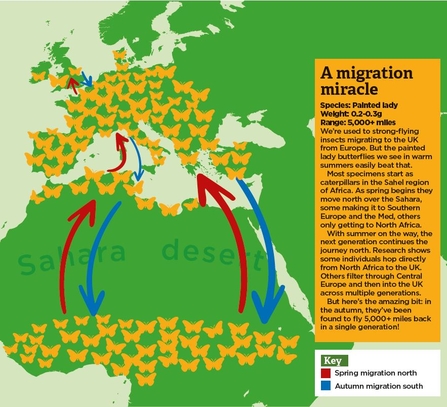
Painted lady migration map
These radars have also revealed the miraculous powers of Britain’s only confirmed obligate migrant moth, the Silver Y. “We suspected they might have some pretty cool capabilities but when we saw the data for the first time it was an exciting surprise,” says Jason Chapman, associate professor at the University of Exeter.
Chapman discovered that the Silver Ys were choosing the altitude that bequeathed most advantageous tail-winds. Radar also revealed that Silver Ys could even orientate their bodies in the correct direction to compensate for cross-winds. Most incredibly, Silver Ys were revealed to be travelling as fast – and sometimes faster – than migrating birds such as thrushes. This was because the moths identified the best spot in the air column for favourable tail-winds, whereas the larger birds didn’t bother.
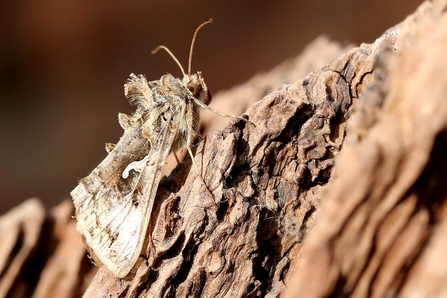
Silver Y ©Margaret Holland
But how do these insects know which way to go? Lab tests have revealed that the lengthening or shortening of days is the painted ladies’ cue: caterpillars growing while days are lengthening become adults who fly northwards. When days shorten, the butterflies are born with an awareness of the need to travel south, to warmer climes. The painted lady orientates itself using the sun, but night-flying moths can’t use a sun compass. A study of Australia’s bogong moth reveals they use the Earth’s magnetic field to guide them.
As the climate changes, some dispersing insects will take up permanent residence in Britain. Charismatic arrivals could include the continental swallowtail and the long-tailed blue, but here’s a tip: the southern small white is making remarkable progress across northern Europe and was first spotted in the Netherlands in 2015. It could soon cross the North Sea into East Anglia.
Many gardeners will not welcome another “cabbage white”. Some insect migrations are portrayed as problematic. Tabloid newspapers reported “swarms” of harlequin ladybirds “invading” last autumn.
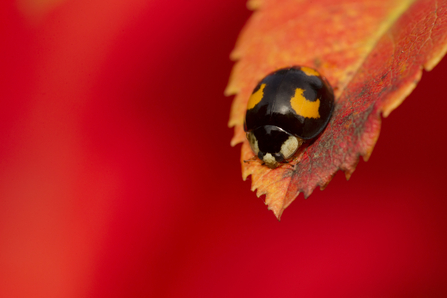
Harlequin ladybird ©Paul Hobson
Ladybird expert Professor Helen Roy worked with Rothamstead’s radar to identify harlequin and seven-spot ladybirds flying as high as 1,100m.
Ladybirds, says Roy, are dispersers rather than true migrants. “Generally ladybirds are a little bit bumbly. The harlequin ladybird is a real opportunist. Because it is generalist in what it eats, it doesn’t matter so much which way it’s going – its main motivation is to move out of overcrowded habitat. They can get across the Channel but mostly they are making more local movements.” The harlequin ladybird’s rapid spread across Europe has been assisted by us, however. New research from Croatia reveals that harlequins are attracted to the lights on ships – they are literally being ferried around Europe.
They do an incredible service of free biological pest control
For all the scares about marauding “invasive” insects – and there is genuine concern about the honeybee-devouring Asian hornet – most migratory insects perform crucial “ecosystem services”. Jason Chapman has studied the Marmalade hoverfly, our commonest species. To his surprise, these show an ability to choose favourable days for wind-assisted migration. Hundreds of millions arrive in the spring; up to a billion depart each autumn. “The really exciting numbers,” says Chapman, “are when you calculate how many aphid pests are eaten by the hoverflies’ larvae. You rapidly get into the trillions. We think they are doing an incredible service of free biological pest control.”
For all the great insect clouds of old, only now are we gaining a sense of the true scale of insect migration. Migratory ecologists looking at radar data have revealed a startling fact: a biomass of 3,200 tonnes of migrating insects. Imagine 270 London buses made from solid insects passing over southern England each summer. Or, if you prefer, roughly 3.5 trillion insects.
That’s an awful lot of bird food. And each one a minuscule everyday miracle.

